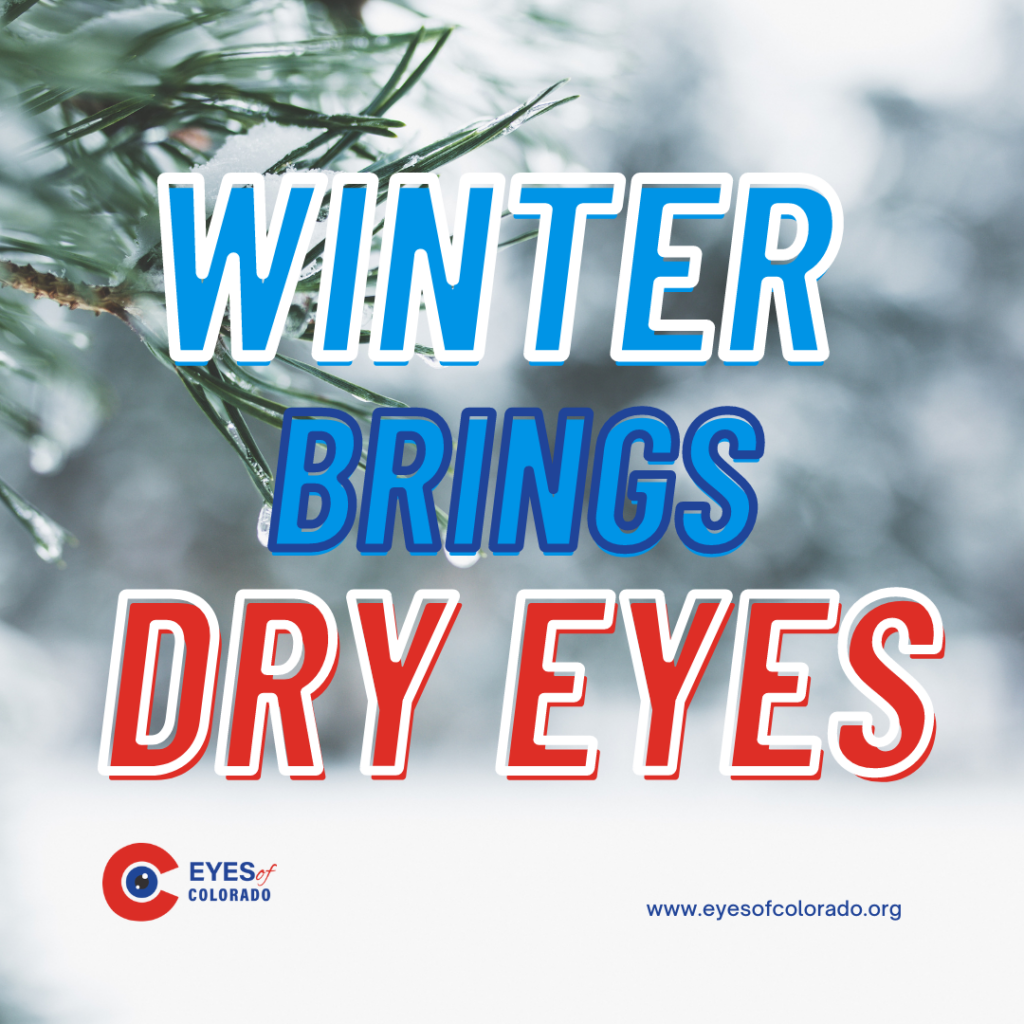Brace yourselves, winter is coming and so are dry eyes! Winter weather conditions are one of the leading causes for dry eye symptoms. This is because the air has less moisture, the wind is likely to be more intense and the cold can wick away the eye’s natural lubricant, tears. Experiencing dry eye symptoms is very common. In fact, it’s experienced by nearly 20 million Americans.
Other causes for dry eye symptoms could include:
- Age
- Allergies
- Environmental conditions
- Gender
- Medications and/or medical conditions
Sometimes, dry eyes can be improved at home with over-the-counter treatments including1:
- Unclogging oil glands in the eyelid (meibomian glands) with warm compresses
- Cleansing your eyelids to remove oil and debris
- Blinking more frequently will allow natural tears to lubricate your eyes
- Eating foods naturally high in omega 3, like salmon, can improve the quality of oil in tears to prevent them from evaporating too quickly
- Drinking plenty of water
- Wearing wraparound sunglasses to protect your eyes from harsh wind and sun
- Using a humidifier, especially in a dry climate like Colorado, can keep the eyes moisturized even in the driest of months
If these tips don’t help your dry eye symptoms, you might be experiencing chronic dry eye disease. An annual comprehensive eye exam with an optometrist near you can help to diagnose if you are not producing enough tears or if the tears being produced are of good quality. Some treatments2 your optometrist might suggest include:
- Prescription eye drops or artificial tears that can ease inflammation in the eyes or add more moisture.
- The use of punctal plugs in your tear ducts to stop excessive tear loss.
- Intense-pulsed light (IPL) therapy and eyelid massage to decrease moderate to severely dry eyes.
- Changing the type of contacts you use to potentially improve the dry eye symptoms you’re experiencing.
Optometrists are a great resource to find dry eye relief in the winter or anytime of the year. Dry eye conditions are not usually harmful, however, leaving them untreated can cause great irritation and may even affect your vision. In extreme cases, damage to the cornea (the front surface of the eye) can occur if it is not adequately protected by your tear film. Discuss with your optometrist which treatment options and symptom management tools are best for you during your annual comprehensive eye exam!
References:




















